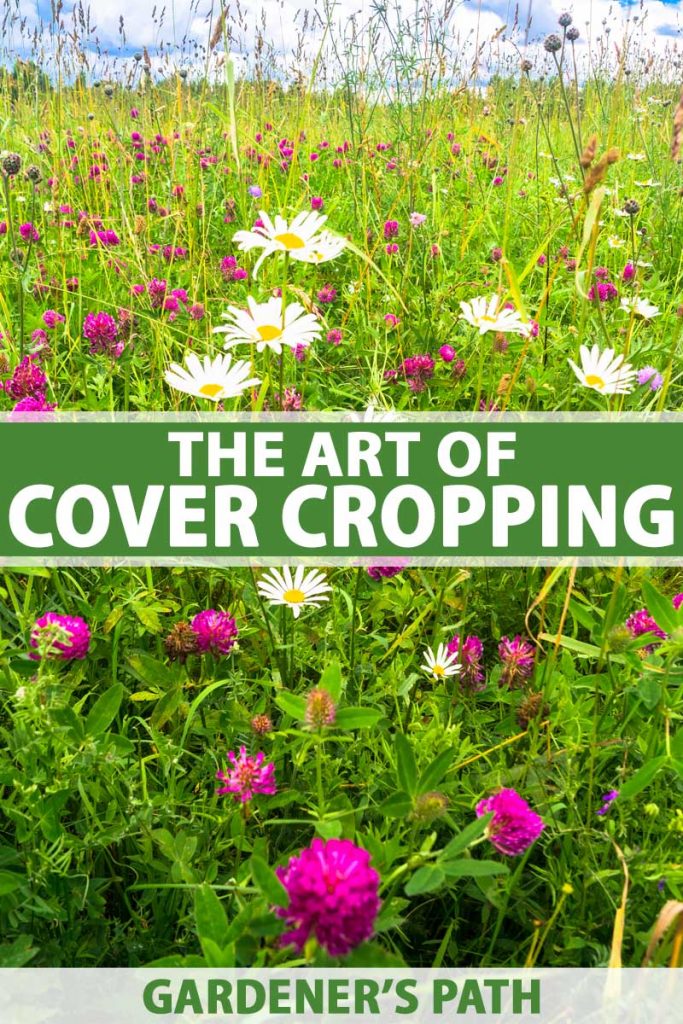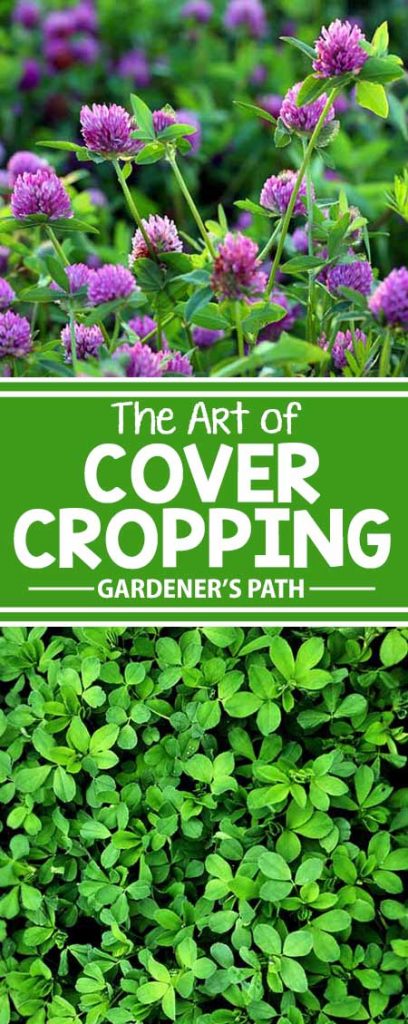Are you attempting to develop your yard in a higher, extra ecologically sound method? A method that reduces or eliminates the necessity for artificial fertilizers, and is best for the ambiance and the soil meals internet?
It’s time to ponder cowl cropping. Half artwork work and half science, it’s an environmentally good, rewarding strategy of offering your crops with pure fertilizers and dietary nutritional vitamins, illness and pest administration, and improved water penetration and retention.
Cowl crops are furthermore time savers, they usually additionally assist gardeners to chop down on the extremely efficient data work of abrasion administration, mulching, and weeding.
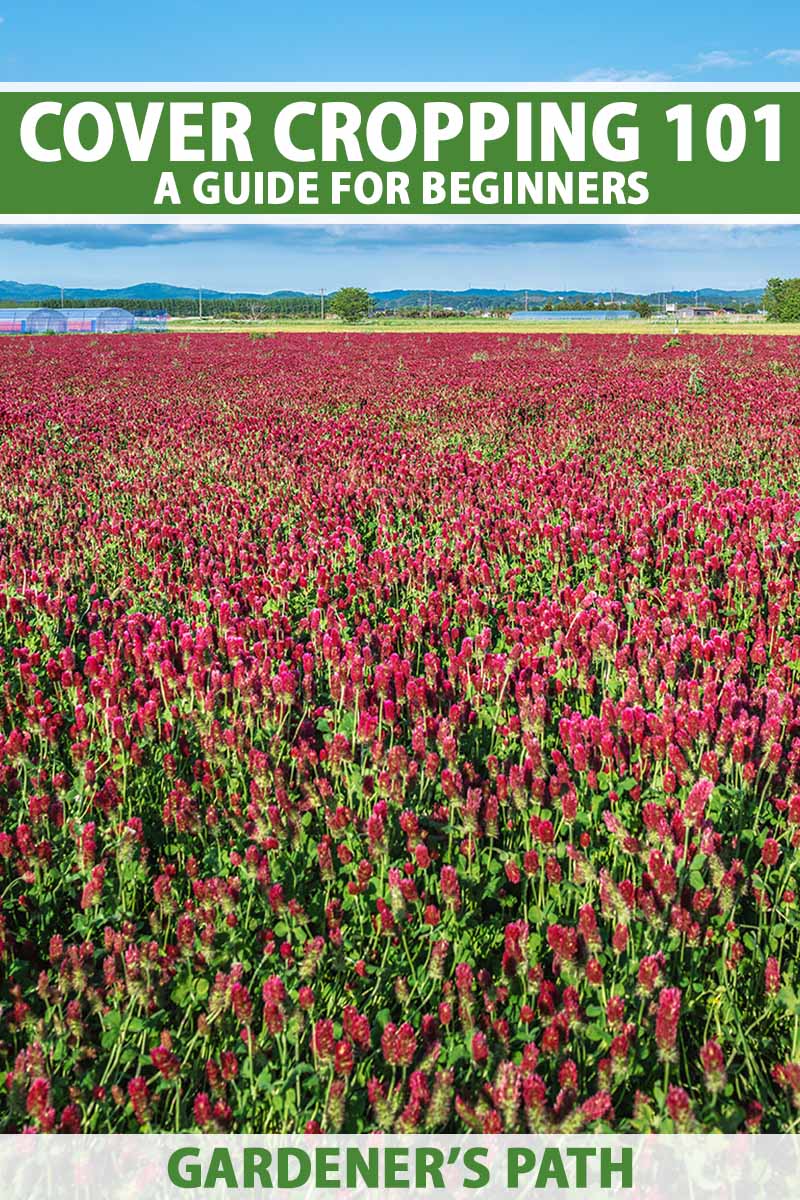

We hyperlink to distributors that will mean you can uncover related merchandise. Should you purchase from thought-about one amongst our hyperlinks, we would earn a cost.
It’s not merely enterprise farmers that income from this ambiance nice soil administration system – inexperienced manure is equally useful in small yard plots together with the as soon as extra forty!
This implies likelihood is you may make an exact distinction to each the correctly being of your yard and the bigger ambiance with the good alternative of canopy cropping. It’s a pure for a happier yard and ecosystem!
Sound intriguing? Then sit once more, calm down, and be a part of us for a try the clever science of canopy cropping – your yard and native biosphere will love this clear, chemical-free system.
Correct proper right here’s the entire thing we’ll cowl:
What Are Cowl Crops?
Cowl crops play a dynamic place all through the farmer’s area together with the house yard.
Typically planted between harvests or for winter safety, they’re non eternal crops that present dietary nutritional vitamins in your greens and the soil they develop in.
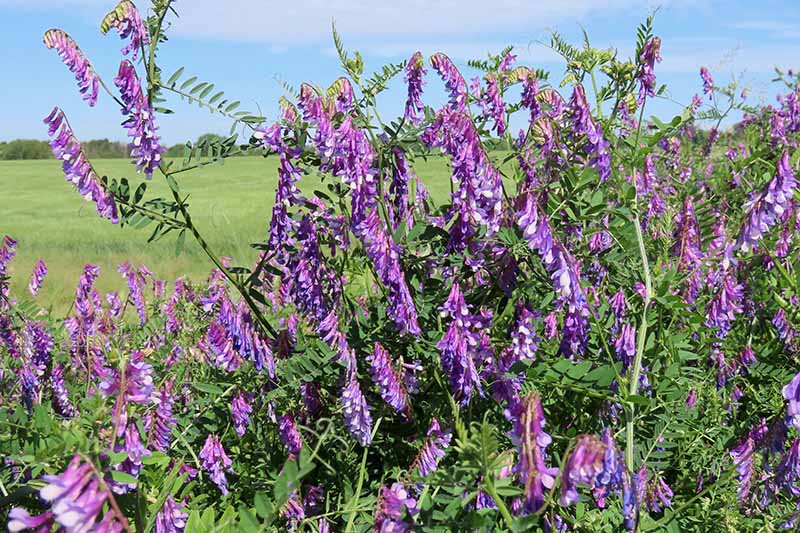

Nonetheless in addition to they carry out many different useful duties all by means of the season. The distinctive time interval “cowl crop” refers to their use as placeholders in empty, post-harvest beds since they completely cowl the mattress floor.
These are fast-growing species with acknowledged useful properties which can be planted in rotation with money crops to resolve constructive soil factors. At residence, “money crops” are the flowers, fruits, herbs, and veggies we wish to develop.
They supply inexperienced decisions to frequent factors like soil loss ensuing from erosion, depleted or nutrient-thin soils, and pesky weeds.
After rising for a predetermined dimension of time, the crops die as soon as extra from winter temperatures or are mowed down, forming a defending mulch.
If a mulch isn’t desired, the choice is to until beneath foliage and roots as a inexperienced manure, instantly along with dietary nutritional vitamins and enhancing the soil make-up.
This all-natural system furthermore reduces or eliminates the necessity for artificial fertilizers, and performs a vast place in pest administration and weed suppression as accurately.
Cultivation and Historic earlier
All by means of agricultural historic earlier, cowl crops have been used to replenish dietary nutritional vitamins and enhance the tilth of overworked soils.
And notable farmers have extended extolled the advantages of crop rotation to replenish and rejuvenate drained fields.
Inside the primary century BCE, the Roman poet Virgil listed their virtues in his saga, “The Georgics.”
Notably, he urged using “golden grains,” “slender vetch-crop,” and “lupins bitter” after money crops have been harvested to quench the depleted, exhausted soil and provides it repose.
And savvy founding farmer George Washington was acknowledged to rotate buckwheat and pink clover with commodity crops akin to wheat.
Nonetheless, after centuries of use, the post-WWII interval seen the inexperienced manuring apply all nonetheless die out. As a replacement, a mannequin new interval of higher crop yields was launched by means of the Inexperienced Revolution.
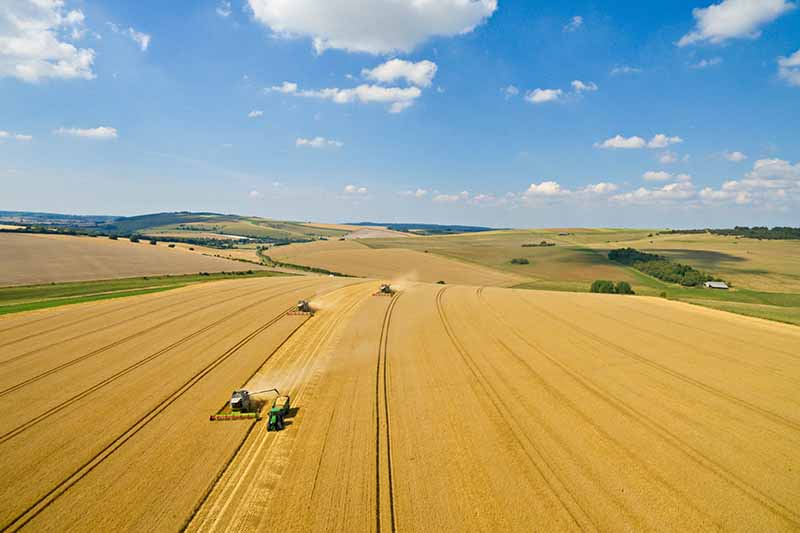

This was a mannequin new system that used designer, high-yielding seeds for improved harvests, plus the intensive use of water-based, artificial fertilizers, herbicides, and pesticides the mannequin new hybrids required for optimum effectivity.
It furthermore employed industrial scale mechanization, like huge irrigation methods and the combustion engine tractors which is perhaps actually so extensively accessible to plow and sow huge tracts of land.
The comfort and enhanced yields geared up by this technique have been shortly embraced by each the large-scale farmer and the yard gardener.
Sadly, together with the boon to productiveness, pretty only a few factors lay hidden all through the plentiful yields.
One in every of many direct and most dangerous penalties of that is the air air air pollution that happens each summer time season as kilos upon kilos of artificial nitrates and phosphate leach into the runoff that leads to our rivers and streams, then journey down the Mississippi River, inflicting lifeless zones all through the Gulf of Mexico.
Nonetheless, an attention-grabbing and benevolent aspect have an effect on of the Inexperienced Revolution is that it furthermore spawned the availability of the stylish pure farming motion. Whereas many embraced the mannequin new agricultural mannequin, a vanguard of pure farmers as quickly as additional appeared to the information of canopy crops to resume and replenish soils.
At present, an rising number of large-scale agricultural operations, each pure and commonplace, are recognizing the cost-effective advantages, and incorporating crop rotation as a part of their administration mannequin.
And naturally, cowl cropping at residence has the same useful affect on our non-public gardens, together with our instantaneous and prolonged environments.
Advantages
The advantages of canopy crops are many and completely completely different. Correct proper right here’s a try merely how healthful your yard could also be!
Easy Erosion Administration
Harsh winter native climate like rain, snow, and wind can shortly strip naked beds and fields of treasured topsoil. Winter cowl crops are among the many many greatest selections to defend within the path of soil loss ensuing from erosion.
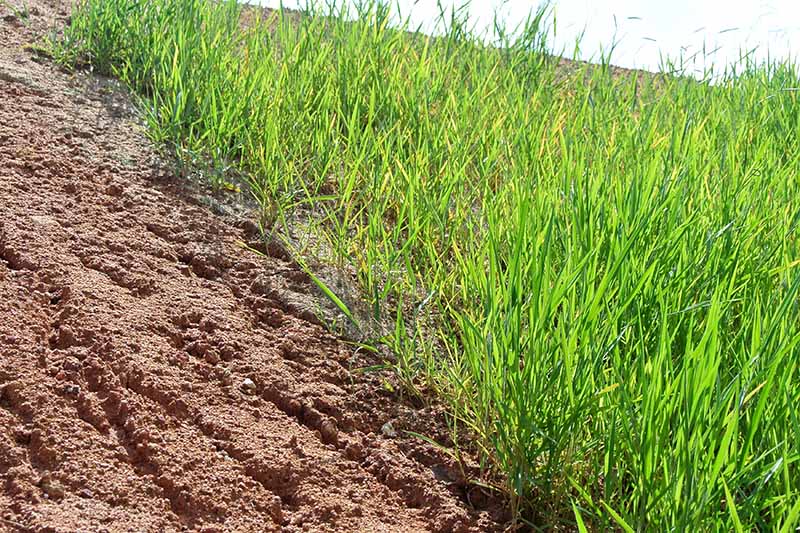

Planted in late summer time season to early fall, winter cowl presents a residing mulch that’s every winter-killed, or chilly hardy.
With winter-killed crops, the foliage dies as soon as extra in chilly temperatures and types a mulch on prime of the soil.
Winter-hardy crops survive the winter and push up new progress as rapidly as daytime improve. Then, they’re tilled beneath in spring as a vibrant, inexperienced manure to enrich the soil for the following rotation.
These winter sowings selection a healthful, residing biomass of foliage and roots that retains the soil firmly anchored in place even in heavy seasonal storms, retaining treasured topsoil. Get the small print on chilly native climate cowl crops correct proper right here.
A Biodiverse Setting
Healthful yard soils are host to pretty only a few varieties of micro organism and fungi, plenty of which is perhaps useful to plant progress by means of the technique of nutrient biking.
These micro-critters feed on the carbohydrates crops launch by means of their roots. And a few, much like the nitrogen-fixing Rhizobium micro organism, colonize roots to commerce dietary nutritional vitamins with the host crops in a symbiotic barter system.
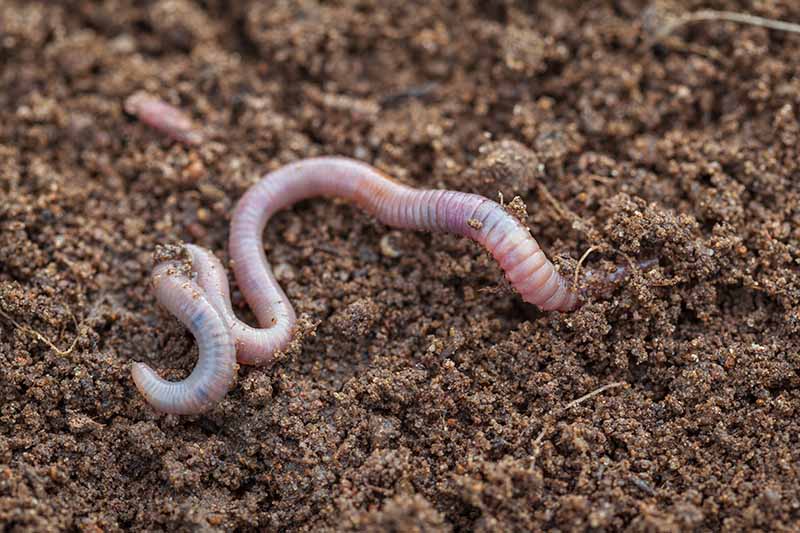

Healthful microbial colonies enchantment to useful bugs and arachnids like beetles, earthworms, and spiders, who see them as meals. And flowering crops like clover enchantment to pollinators, offering priceless early-season nectar for very important flying bugs like bees and butterflies.
In flip, the bugs enchantment to birds and small mammals, contributing to the numerous soil meals internet in your non-public yard – with all standing by to service the fruit, flower, herb, and veggie crops that observe!
Enrich Soil Fertility
It’d appear counterintuitive, nonetheless planting constructive crops ahead of or after your veggies can really enhance the soil’s fertility.
That is achieved by means of the processes of nitrogen fixing, nitrogen scavenging, and nutrient biking.
Nitrogen-fixing crops like beans, clover, lupins, and peas selection a symbiotic relationship with the Rhizobium micro organism. These colonize the roots and are related to the formation of nodules, by means of which the micro organism convert captured atmospheric nitrogen into types the plant can use.
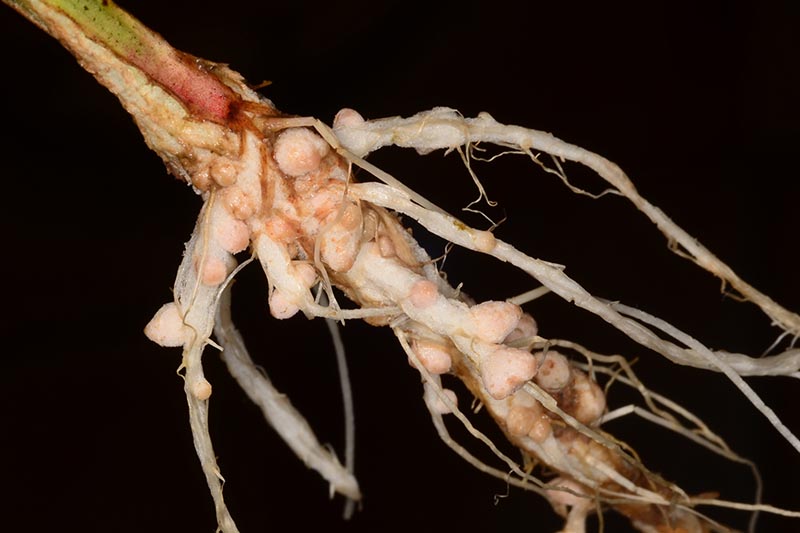

Nitrogen-scavenging crops like oats, radishes, and cereal rye lure free nitrogen all through the soil that’s typically misplaced to leeching or runoff.
By stopping erosion, they assist to handle nitrates all through the soil the place they’re useful, and in no way in runoff the place they could contaminate waterways, creating algae blooms and lifeless zones.
Nutrient biking comes from the repetitive interactions of pure life cycles. After termination and tilling, plant gives break down, releasing priceless nitrogen and completely completely different components like carbon, phosphorous, and sulfur as soon as extra into the soil, decreasing the necessity for artificial fertilizers.
Decomposition is aided when crops launch their sugars into the soil, which might be a magnet for micro organism and fungi.
They in flip enchantment to the earthworms that velocity up plant breakdown, releasing dietary nutritional vitamins as soon as extra into the soil in bioavailable types the following crop can make the most of.
Enhance Soil Aeration, Water Infiltration, and Water Retention
Crops with an plentiful biomass typically have deep, tough root methods that enhance aeration, water infiltration, and water retention.
In addition to they assist to forestall soil compaction and crusting, retaining it friable and higher in a position to swap oxygen and water.
A healthful biomass furthermore traps floor water from rainfall, which might improve root zone infiltration and reduces moisture evaporation.
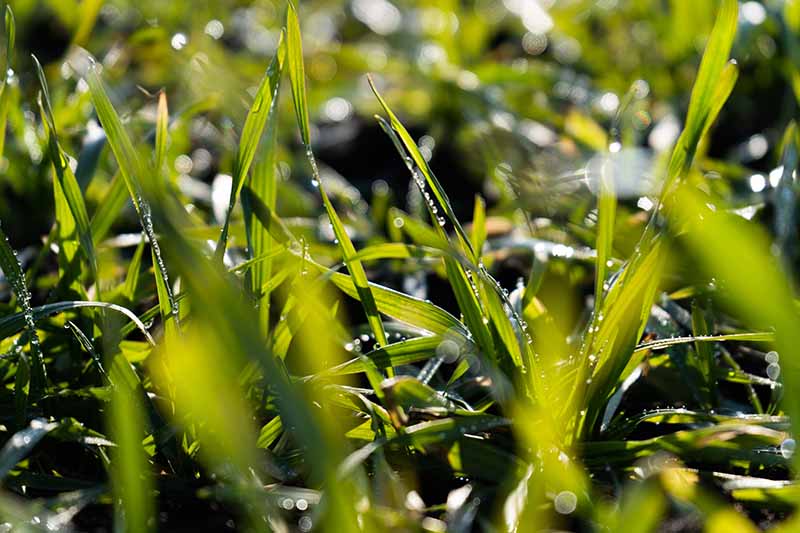

Tilled-under plant residues furthermore create a healthful, richly textured soil that absorbs water merely, transports it deeper, and holds moisture longer in dry occasions.
And crops with deep roots like forage radishes are setting pleasant at breaking apart and aerating extremely efficient soils at deeper ranges, so that they’re lighter, simpler to take care of, and foster a healthful ambiance for the veggies which can be planted the next season.
Soil Conditioning and Stabilization
The utilization of cowl crops is little doubt one in all many greatest, and best, methods to spice up soil constructing and stability.
Deep, thick roots assist to interrupt up clay soils and hardpan, the thick crust of earth that can selection over finer, deeper layers of soil in newly ploughed beds.
And when used as inexperienced manure, the decomposition of plant residue provides soil pure matter (SOM) that circumstances and builds tilth, improves fertility, and might improve stability by means of the technique of aggregation.
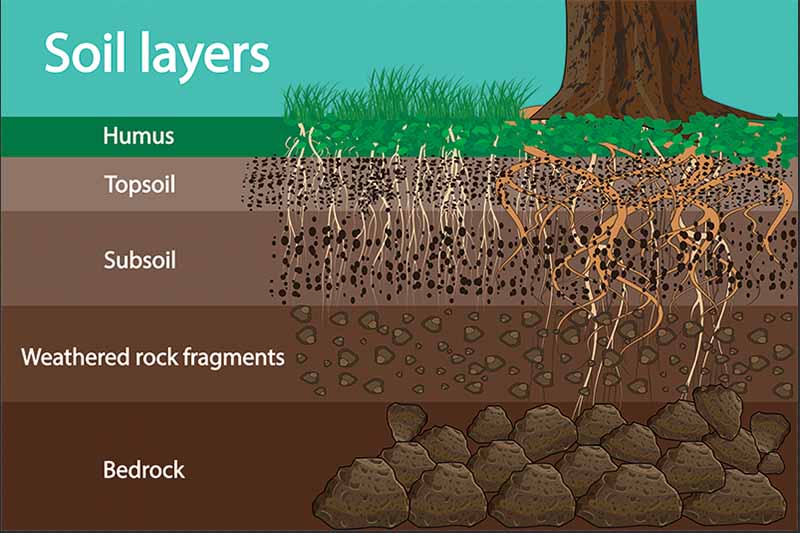

Aggregation is the affiliation of soil particles akin to clay, sand, and silt with pure gives like glomalin.
Glomalin is the “glue” that holds aggregates collectively in a secure constructing, and it’s created solely by arbuscular mycorrhizal fungi (AMF), one number of useful microbes which can be attracted by the sugary carbohydrates launched by plant roots.
Biofumigation and Pest Prevention
Optimistic cowl crops, notably the brassicas like canola, mustard, and forage radish, have the distinctive performance to forestall and destroy the cycles of some soilborne illnesses and pests, together with parasitic root-knot nematodes and numerous wilts like Fusarium and Verticillium.
This biofumigation property is a built-in security within the path of herbivores, and it occurs when crops are chopped and tilled.
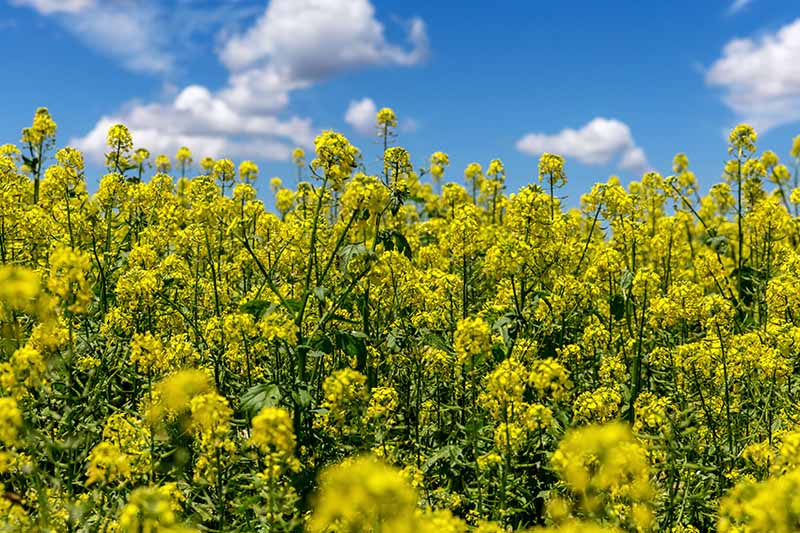

The chopping motion causes crops to launch enzymes that work together with glucosinolates and type a sulfur compound, isothiocyanate, that acts as a pure fumigant. Isothiocyanate might also be what presents these crops their scorching, pungent mannequin.
Together with the brassicas already talked about, sudangrass, all through the Grains and Grasses group described beneath, might also be an setting pleasant biofumigator.
Weed Suppression
Effectively decreasing weeds is a favourite attribute for each the farmer and gardener. Listed beneath are numerous methods cowl crops do the job of weed suppression for you:
Quick-growing crops with a vast biomass can outcompete weeds for delicate, dietary nutritional vitamins, dwelling, and water, decreasing their look by as moderately quite a bit as 80 to not less than 100 laptop computer.
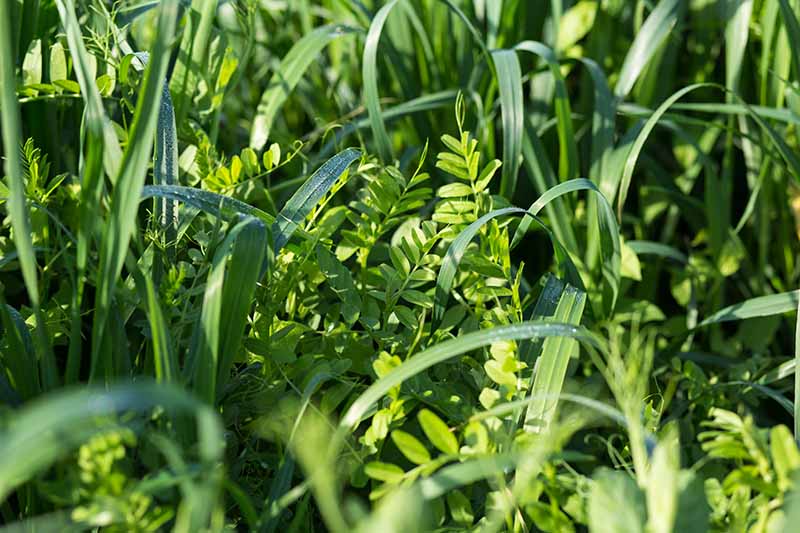

Some crops even have pure allelopathic properties. Energetic compounds often often known as allelochemicals which can be produced by crops act like herbicides, impeding the enlargement of shut by germinating seeds and seedlings.
Buckwheat, canola, winter grains, and sorghum are numerous crops with good allelopathic properties acknowledged to income growers.
A leafy inexperienced cowl might also be setting pleasant at suppressing weed seed germination.
The inexperienced manure leaves soak up a lot of the accessible pink delicate all through the seen spectrum, which is required by seeds to sign germination. With out the pink delicate, seeds preserve dormant.
And when the biomass dies as soon as extra, it types a mulch that retains the soil shady and funky – as quickly as additional blocking the triggers wanted to start out germination.
Weed suppression is usually solely with crops grown collectively, like a grain and a legume.
Study to Develop Cowl Crops
Cowl crops can be planted at numerous occasions from spring till fall, relying on one of the best ways it is important to make use of them.
Ahead of planting, rake your yard beds or plots till the soil is stage and clear, eradicating any particles and stones.
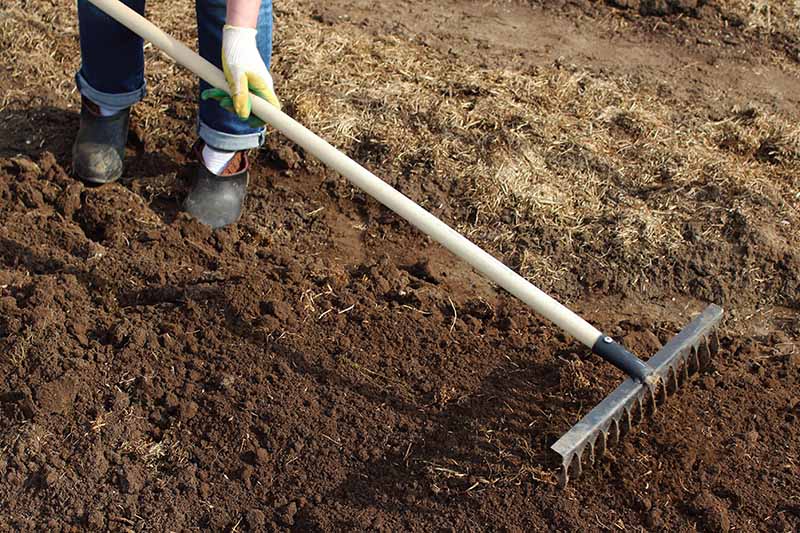

Broadcast the seed in response to the rising directions and truly helpful bills for canopy in your chosen alternative. Seed packets will often degree out what’s greatest if you’ll buy seed supposed for canopy cropping.
Frivolously rake all through the seeds, and water gently utilizing a optimistic mist setting.
To make sure your crops get a wonderful begin, after sprouts are two to 4 inches tall, apply a balanced fertilizer akin to 10-10-10 (NPK). For legumes, use a decrease nitrogen components like 5-10-10.
Water spring and summer time season crops often, and guarantee winter crops obtain satisfactory moisture if autumn rains are late.
To resolve on these greatest suited in your yard, resolve the outcomes you’d like for every of the next questions as outlined beneath.
1. When Will They Develop?
Optimistic crops carry out greatest in summer time season, akin to buckwheat, cowpeas, millet, sorghum-sudangrass hybrids, and soybeans.
Others are higher suited to winter, like crimson and pink clover, forage radish, furry vetch, winter rye, and winter wheat.
Select the crops greatest suited in your area and the season you intend to develop them in.
2. How Extended for Crop Maturity?
For canopy plantings, crop maturity pertains to the time interval it takes from sowing seeds to as quickly as they’ll be killed.
To facilitate the planting of money crops on the right time, summer time season cowl crops and winter-hardy ones should be chopped or mowed to finish their progress. Freezing temperatures typically end off winter-killed ones.
For max income, crops must be allowed to develop plentiful foliage and presumably even start flowering – nonetheless they should be terminated ahead of producing seeds.
When allowed to flower, some stems can kind out a tough, fibrous texture that decomposes quite a bit a lot much less readily. And likewise you don’t should until in seeds which may compete with the veggies to return once more.
Calculate the sowing date by counting as soon as extra from the supposed kill date for summer time season harvests, or the anticipated first frost date for winter plantings.
Take note the reality that it’d almost certainly take 4 to eight weeks for crops to seek out out healthful roots and ample foliage. Have a look at the rising necessities for every seed alternative that you just simply’ve chosen to tighten up planting occasions, and create a plan in your gardening journal.
When planning a sowing date for winter cowl, keep in mind the truth that the soil begins to calm down starting in late summer time season in plenty of areas, and it’ll gradual plant institution. If attainable, take into consideration one completely different week or two of rising time to counter delays ensuing from cooling native climate.
For spring and summer time season rotations with an trustworthy cultivation window, fast-growing buckwheat and sorghum-sudangrass hybrids are at all times good selections.
3. How Will Crops Be Terminated?
I do realize it sounds horrific, nonetheless untimely plant termination is an important step with cowl crops!
For the house gardener, the best technique for killing crops is to mow them down with yard loppers, a yard mower, or your string trimmer, slicing low and near the bottom.
After termination, the mown foliage could also be left on the underside to selection a mulch – which is perhaps very setting pleasant with no-till planting methods – or it is perhaps tilled into the soil together with the roots, along with nutritious inexperienced manure.
4. How Extended for Crop Residue to Decompose?
Crops decompose at absolutely completely completely different bills, relying on their constructing.
For instance, residue from crops with tender stems, akin to buckwheat or peas, breaks down prior to those with thicker, extra sturdy stems like barley or sorghum.
Thick stems aren’t an issue for those who occur to wish to use the residue as mulch, nonetheless for tilling, two to 4 weeks must be allowed for crops to decompose adequately ahead of the following crops are planted.
5. What Meals Crop Will Regulate to?
Lastly, realizing what will almost certainly be grown afterwards may help to go looking out out the best cowl species.
For instance, heavy feeders like peppers and tomatoes income from following a inexperienced manure planting, notably legumes like clover or area peas that add nitrogen as soon as extra into the soil.
Whilst you’ve decided the aim of your chosen plantings, choose these species that suit your timeframe and the advantages you need.
Rising Ideas
Together with their an a variety of benefits, cowl crops are chosen for his or her easy, quick progress. The next options will mean you can get primarily primarily probably the most from them.
- Mow and/or until beneath cowl crops ahead of seed heads selection. As rapidly as seeds begin to mature, flower stems can flip into arduous and woody, and take for for for much longer to decompose, and undesirable seeds may sprout.
- Enable two to 4 weeks for tilled crops to decompose ahead of planting as quickly as additional.
- For brief-term rotations, select inexperienced manure crops which can be tender and fast-growing like buckwheat or area peas.
- For long-term crops, pairing small grains akin to barley, oats, and rye with a legume like peas or vetch combines an a variety of benefits for superb outcomes.
- When undecided, buckwheat is an impressive danger to start out with. Plant in spring or summer time season, permit it to flower, then mow and until – your pure soil enrichment apply is accurately beneath method!
For these keeners within the market, a wonderful reference e e-book is at all times useful in establishing new practices.
“Establishing Soils for Healthful Crops” by Fred Magdoff and Harold van Es is full of clever data on how one can naturally foster healthful soil methods for plentiful yields.
Establishing Soils for Healthful Crops
It’s accessible at Amazon.
Sorts of Cowl Crops
Cowl crops aren’t fancy crops, and they also’re obtainable by means of seed homes, yard providers, and on-line internet sites.
We’ve curated a well-rounded choice, together with detailed descriptions, in our information to the best cowl crop varieties for the yard.
Cowl crops fall into three principal programs: brassicas, grains and grasses, and legumes. We’ll briefly cowl every of those beneath, with really helpful examples.
Brassicas
Brassicas are grown for his or her speedy cool-season progress, producing an plentiful biomass that improves aeration, alleviates compaction, presents erosion administration, and suppresses weeds.
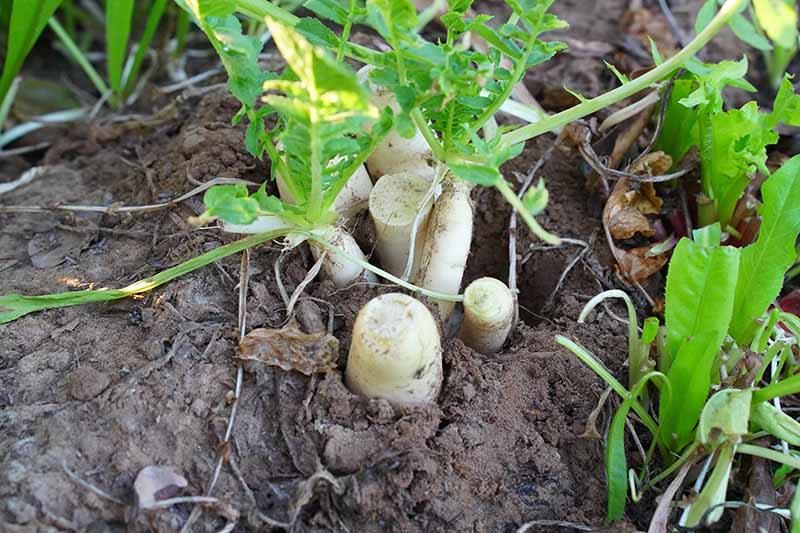

They’re furthermore nice at scavenging dietary nutritional vitamins, and help pest administration ensuing from their launch of isothiocyanates that act as a fumigant.
Frequent brassica species used as cowl embrace arugula (Eruca vesicaria), canola (Brassica napus and B. rapa), mustard (B. hirta, B. juncea, and B. nigra), and forage radish (Raphanus sativus).
Grains and Grasses
The grains and grasses used as cowl are these small-seeded species that germinate and develop shortly, producing giant parts of fibrous foliage and dense roots that present erosion administration, scavenge dietary nutritional vitamins like nitrogen, assemble soil pure matter, and stop weeds.
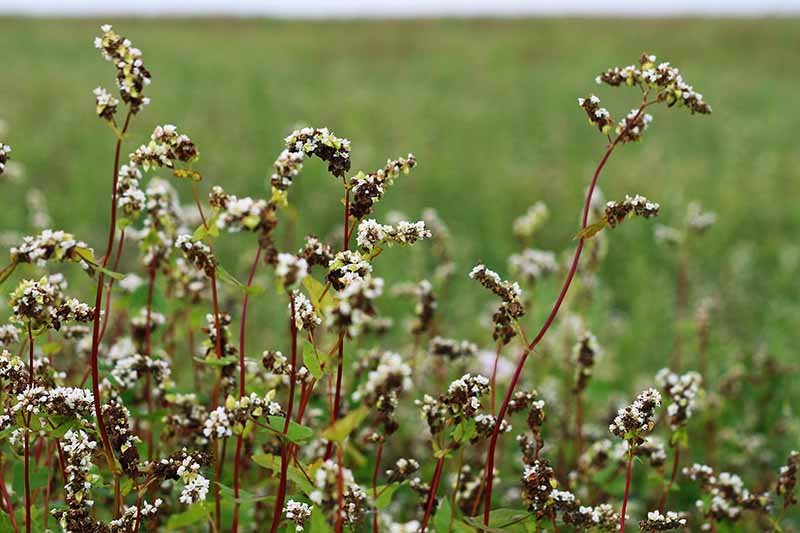

Grasses and grains are usually blended with legumes like clover or furry vetch to double up the advantages, akin to biomass manufacturing, nitrogen scavenging, soil conditioning, and weed administration.
The species most ceaselessly used for rotation embrace barley (Hordeum vulgare), buckwheat (Fagopyrum esculentum), oats (Avena sativa), triticale (× Triticosecale), annual ryegrass (Festuca perennis), winter rye (Secale cereale), and winter wheat (Triticum aestivum).
Legumes
Legumes are fast-growing forage species that develop an plentiful biomass, in the reduction of or forestall erosion, restore atmospheric nitrogen, and enchantment to useful bugs when in flower. In addition to they work to disrupt illness, insect, and weed cycles.
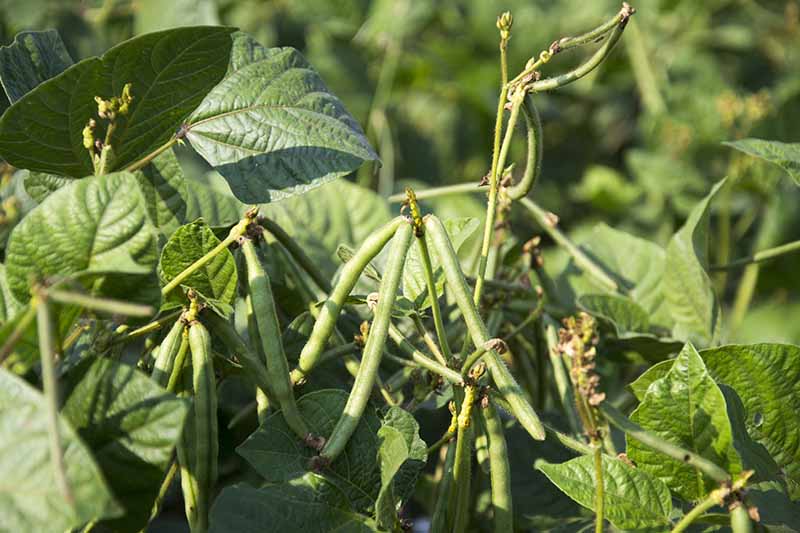

Some legume seeds are furthermore accessible pre-inoculated with Rhizobium micro organism, or you can purchase inoculant and apply it your self, to make sure a quick, full, and worthwhile nitrogen-fixing cycle.
Usually used legume species embrace cowpeas (Vigna unguiculata), crimson clover (Trifolium incarnatum) pink clover, (T. pretense), furry vetch (Vicia villosa), and area peas (Pisum sativum subsp. arvense).
In some options, you will have to rotate a set of canopy crops by means of your fields or yard.
Going Inexperienced
As it’s possible you’ll even see, going inexperienced with cowl crops can obtain many factors in your yard, from erosion administration and nutrient establishing to pest and weed suppression.
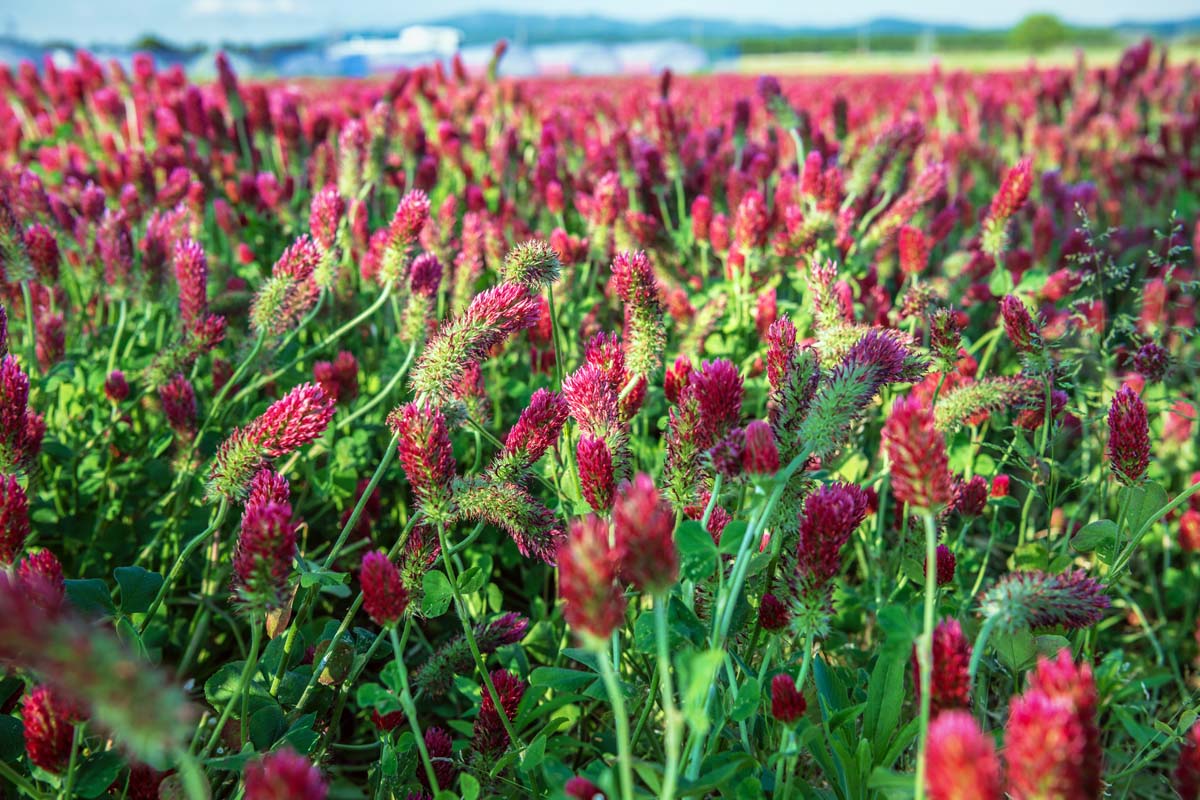

Plus, using extra pure, quite a bit a lot much less invasive methods of bringing meals to the soil is a smart method for us to contribute to a healthful ambiance. And a cheerful soil microbiome in your yard beds produces an abundance of tasty, glad crops!
It isn’t arduous, and with a bit planning likelihood is you may ease your method into this apply and produce constructive outcomes beginning all through the primary yr.
Any questions relating to the artwork work of canopy cropping? Drop us a line all through the options half beneath!
And for added soil conditioning know-how, concede to be taught these articles subsequent:

